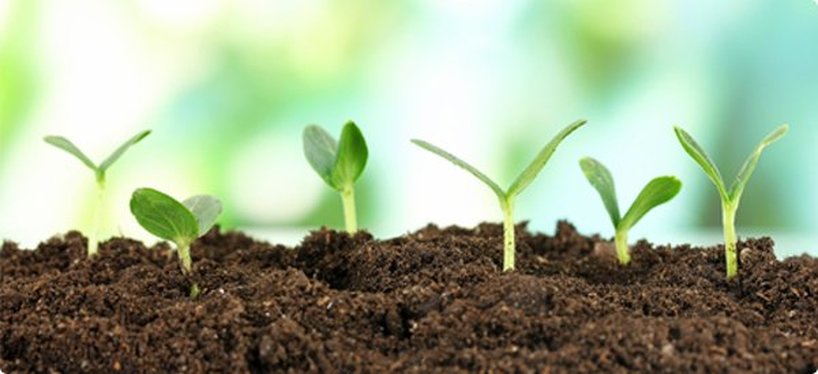|
3/3/2016 0 Comments The Secret's in the Soil"A garden is only as good as its soil."
A wise gardener once said this. While soil is not the most exciting part of gardening, it could be the most important. There are many things to consider about soil and it's rare to find the perfect soil without adding amendments of some kind. Here in SE Wisconsin, much of our soil structure is heavy clay - water tends to sit longer and plants struggle without air in the soil. Along the lake it tends to be more sandy which offers better drainage, but nutrients tend to seep away along with the water. The ideal soil is loamy rich in organic matter and beneficial microbes. If you have heavy clay or sandy soil, adding compost every fall or spring is the best thing you can do. In addition to good soil structure, soil pH is a key factor. If your plants aren't flourishing, it could be the wrong soil pH. Proper pH promotes plant growth by making it easier for roots to absorb essential nutrients. 7.0 is neutral; above that is considered alkaline (our native soil's tendancy); below that is acidic. Most garden plants grow best in slightly acidic soils (6.5). Adding peat moss will lower the pH as will other organic amendments as they decompose. Blueberries, for example, need a soil pH of 4.5-5.5, so planting in peat followed with an annual boost of aluminum sulfate will help. A simple soil pH test can be helpful in knowing what you need to add to sweeten or sour the soil. Speaking of soil tests, it's a good idea to test your soil in the spring to see what is lacking. Whether you are growing vegetables, shrubs, perennials, or turf, it's worth it! There are simple DIY tests available here at BGC that will give you a general idea. If you want more specific results, take a soil sample and send it in to UW Madison Department of Soil Science. We have the test kits here as well. If you only take two things away from this article, here is one of them: Feed the soil, not the plants! Just as we don't live on water alone, plants need food as well. The best thing you can do for your plants is to feed the soil. By building up the soil with minerals, nutrients, and microorganisms, you are also feeding the plants. We hear alot about NPK (nitrogen, phosphorus, and potassium) but minerals are just as important. Minerals make up 90% of garden soil and hold onto plant nutrients. The second is the soil is alive! It's alive with microorganisms (bacteria and fungi) that capture moisture and nutrients making them available to the plant roots. Our favorite things to feed the soil are worm castings because they add NPK, calcium, minerals, and beneficial bacteria. TIP: Add directly to the planting hole or row rather than to the entire garden bed. Composts, especially cotton burr compost, is another favorite amendment. Not only do they add organic matter and microorganisms, they lighten the soil. This means clay soils won't be so heavy and sandy soils will have better nutrient capacity. A personal favorite of mine is Nature's Blend with alfalfa and humates. I add it to every planting hole for trees, shrubs and perennials. It also makes a good top dressing for lawns. The benefits of compost tea have long been touted, but not everyone wants to mess with putting compost in a cheesecloth bag and letting it steep overnight in a 5-gallon bucket of water. Life just got easier with prebagged compost tea bags from Purple Cow. Drop one in your watering can and after steeping, water the soil around the plants or use it as a foliar feed. One last recommendation for improving soil is to sow a cover crop in the fall to till under in the spring. Winter rye and buckwheat are two that work well in our area. The tilled-under foliage becomes an instant source of nitrogen which the microbes will quickly breakdown making it available to the plants. As you make your garden plans for spring, include plans to improve your soil. Your plants will thank you! Tracy Hankwitz BGC Store Manager & Horticulturist photo source: redbeacon.com
0 Comments
Leave a Reply. |
|
|
STORE INFO
5205 Mormon Road Burlington, WI 53105 262.763.2153 |

